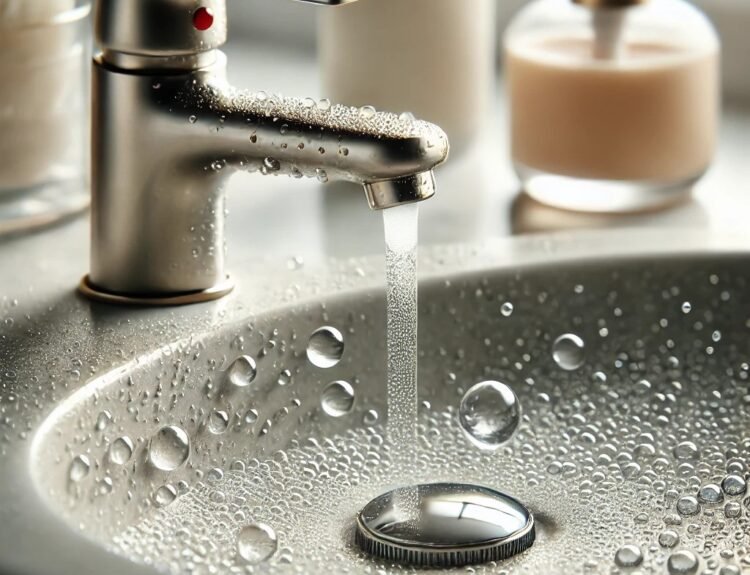Acne is one of the most common skin concerns, affecting people of all ages. While hormonal imbalances, genetics, and lifestyle choices play a role, the right skincare routine can significantly reduce breakouts and improve skin health. In this guide, we’ll walk you through the essential steps to build an acne-fighting skincare routine that promotes clear, radiant skin.
Understanding Acne and Its Causes
Before diving into a routine, it’s crucial to understand acne and its causes. Acne occurs when hair follicles become clogged with oil and dead skin cells. Common triggers include:
- Excess sebum production – Overactive oil glands can clog pores.
- Bacteria (Propionibacterium acnes) – Triggers inflammation and breakouts.
- Hormonal fluctuations – Changes in hormones can lead to increased oil production.
- Diet and lifestyle – High-sugar diets, stress, and poor skincare habits can contribute to acne.
- Incorrect skincare products – Using products that clog pores can worsen acne.
Now that we understand the causes, let’s build an effective acne-fighting skincare routine.
Step 1: Choose the Right Cleanser
Cleansing is the foundation of any skincare routine. A good acne-fighting cleanser should remove excess oil, dirt, and bacteria without stripping the skin.
Best Ingredients to Look for:
- Salicylic Acid – A beta hydroxy acid (BHA) that unclogs pores and reduces inflammation.
- Benzoyl Peroxide – Kills acne-causing bacteria and reduces oil.
- Tea Tree Oil – A natural antibacterial and anti-inflammatory agent.
- Clay or Charcoal – Absorbs excess oil and detoxifies the skin.
How to Cleanse Properly:
- Wash your face twice daily (morning and night).
- Use lukewarm water and a gentle circular motion.
- Avoid harsh scrubbing, which can irritate the skin.
Step 2: Exfoliate Regularly (But Gently)
Exfoliation helps remove dead skin cells that can clog pores. However, over-exfoliating can damage the skin barrier and worsen acne.
Best Exfoliants for Acne-Prone Skin:
- Chemical Exfoliants (AHAs & BHAs) – Glycolic acid (AHA) and salicylic acid (BHA) work to unclog pores and smooth skin.
- Enzyme Exfoliants – Derived from fruits like papaya or pineapple, these are gentle yet effective.
How Often to Exfoliate:
- Oily/Combination Skin – 2–3 times a week.
- Sensitive/Dry Skin – 1–2 times a week.
Step 3: Apply an Acne Treatment
Targeted treatments help combat acne at its source. Choose treatments based on your acne type:
- Spot Treatments – Use benzoyl peroxide or tea tree oil for active breakouts.
- Serums for Acne – Niacinamide reduces redness and controls oil production.
- Retinoids – Help with cell turnover and prevent clogged pores.
- Sulfur-Based Treatments – Ideal for reducing inflammation and drying out pimples.
Apply treatments after cleansing and exfoliating, allowing them to absorb before layering other products.
Step 4: Hydrate with the Right Moisturizer
Many people with acne-prone skin skip moisturizer, fearing it will clog pores. However, hydration is crucial to maintain a healthy skin barrier.
Best Moisturizers for Acne-Prone Skin:
- Oil-Free, Non-Comedogenic Formulas – Prevent pore-clogging.
- Gel-Based Moisturizers – Lightweight and hydrating.
- Hyaluronic Acid – Provides moisture without heaviness.
- Ceramides and Niacinamide – Help repair the skin barrier and reduce redness.
Apply moisturizer twice daily after treatments to lock in hydration.
Step 5: Always Use Sunscreen
Sunscreen is essential, especially when using acne treatments that increase sun sensitivity.
Best Sunscreens for Acne-Prone Skin:
- Mineral Sunscreens (Zinc Oxide & Titanium Dioxide) – Non-irritating and provide broad-spectrum protection.
- Oil-Free and Non-Comedogenic Sunscreens – Prevent breakouts.
- SPF 30 or Higher – Essential for daily protection.
Apply sunscreen every morning, even on cloudy days, to prevent sun damage and post-acne hyperpigmentation.
Step 6: Maintain a Healthy Lifestyle
Skincare products can only do so much—lifestyle choices also impact acne.
Lifestyle Tips for Clear Skin:
- Eat a balanced diet – Reduce sugar, dairy, and processed foods.
- Stay hydrated – Drink plenty of water to flush out toxins.
- Manage stress – High stress increases cortisol, leading to breakouts.
- Change pillowcases regularly – Prevent bacteria buildup.
- Avoid touching your face – Keeps dirt and bacteria away.
Step 7: Consider Professional Treatments
For persistent acne, professional treatments can provide additional help:
- Chemical Peels – Help unclog pores and fade acne scars.
- Laser Therapy – Reduces bacteria and inflammation.
- Microneedling – Improves acne scars and skin texture.
- TMS Therapy – Emerging research suggests transcranial magnetic stimulation (TMS) may help with stress-related breakouts.
Consult a dermatologist to determine the best treatment for your skin.
Final Thoughts
Building an acne-fighting skincare routine takes consistency and the right products. By cleansing properly, exfoliating wisely, using targeted treatments, and maintaining a healthy lifestyle, you can significantly reduce breakouts and achieve clearer skin. Remember, results take time—stay patient and committed to your routine for the best outcome.









2 Comments
Testymo
3 years agoThis is really amazing! Aliquid ex ea commodi consequatur?